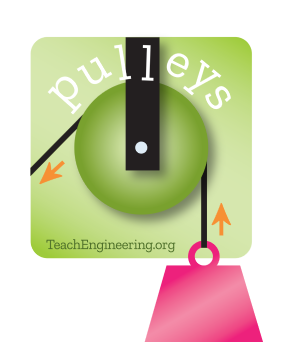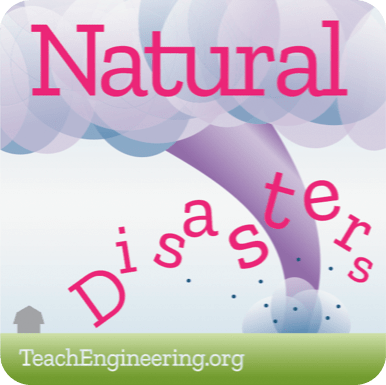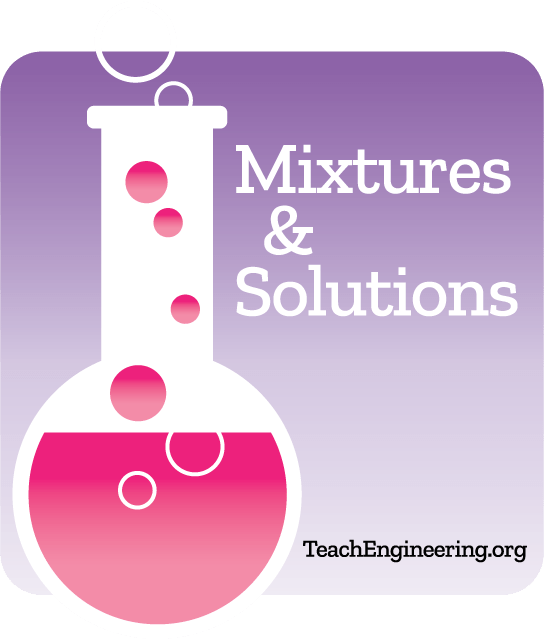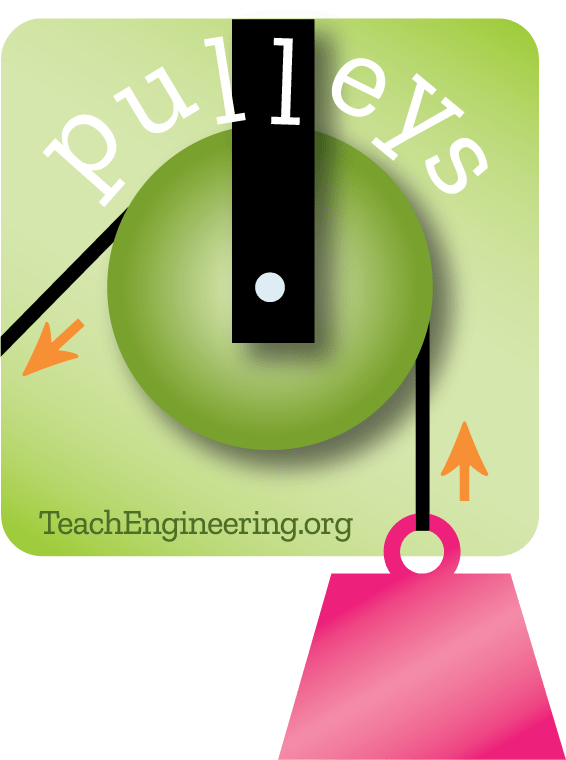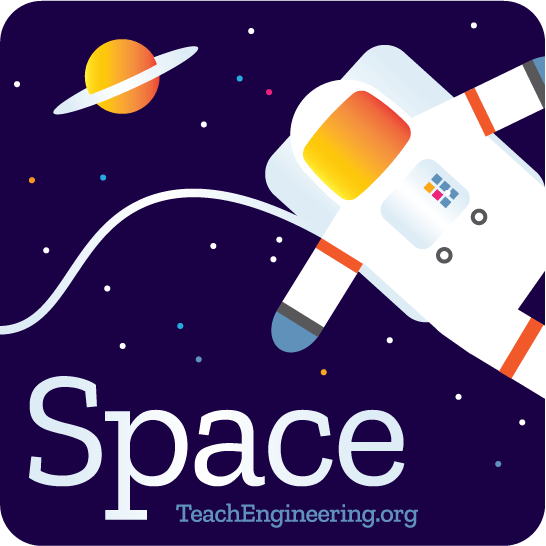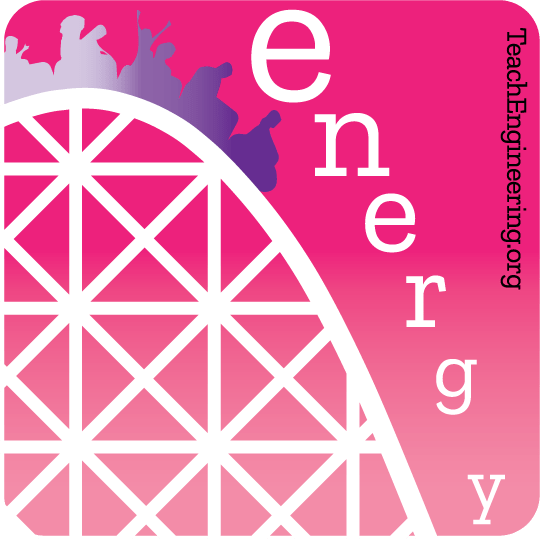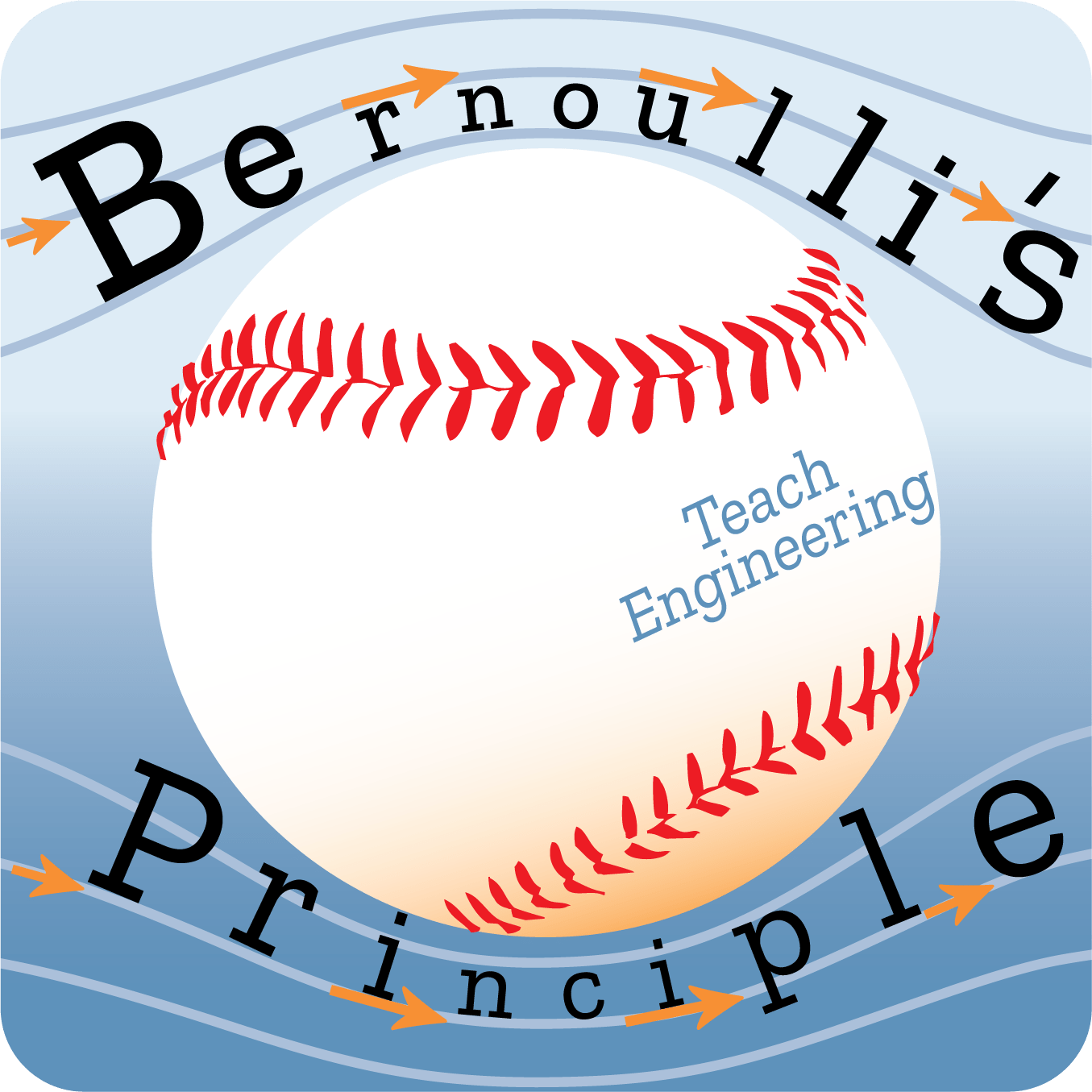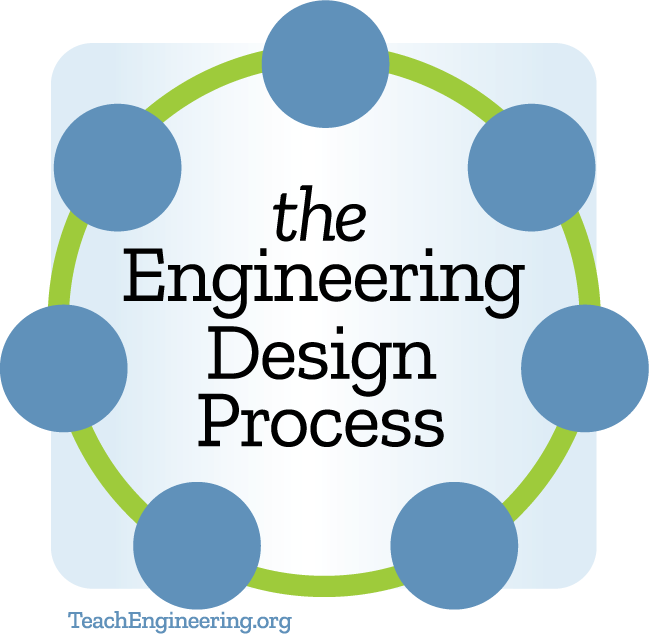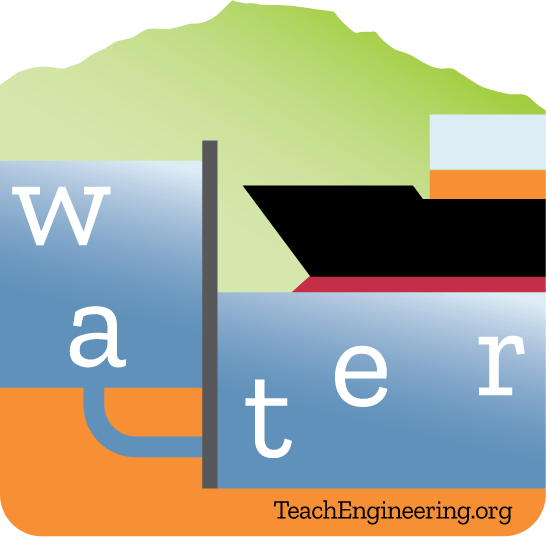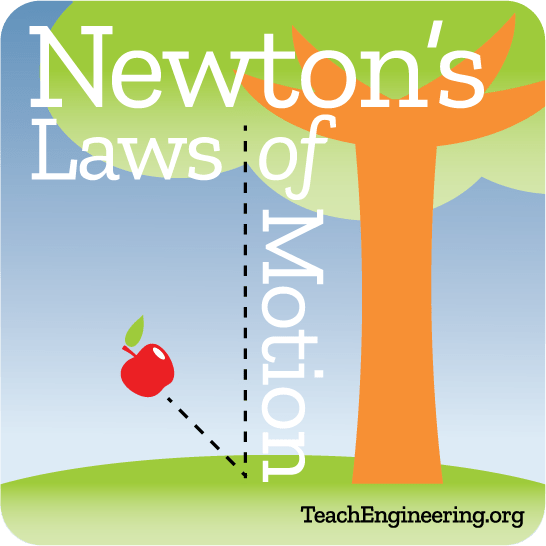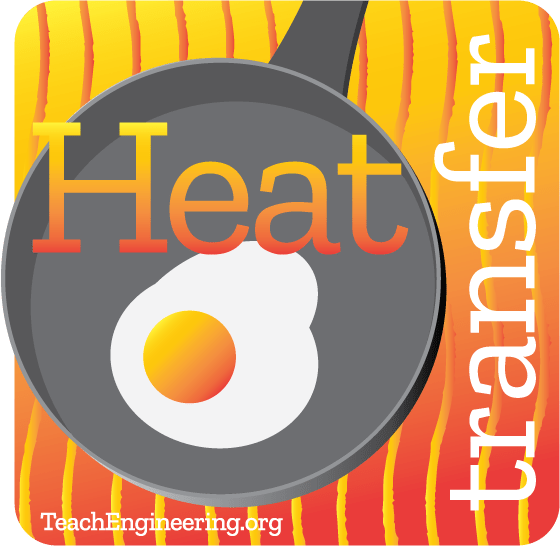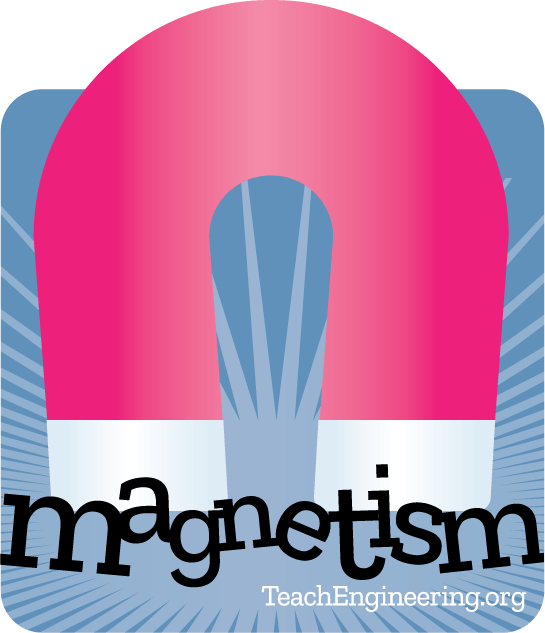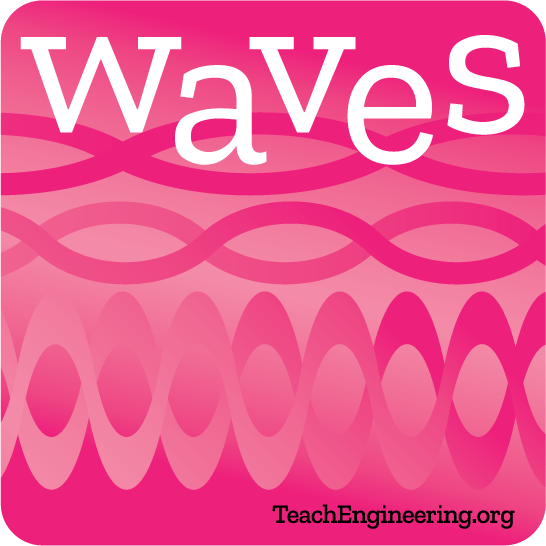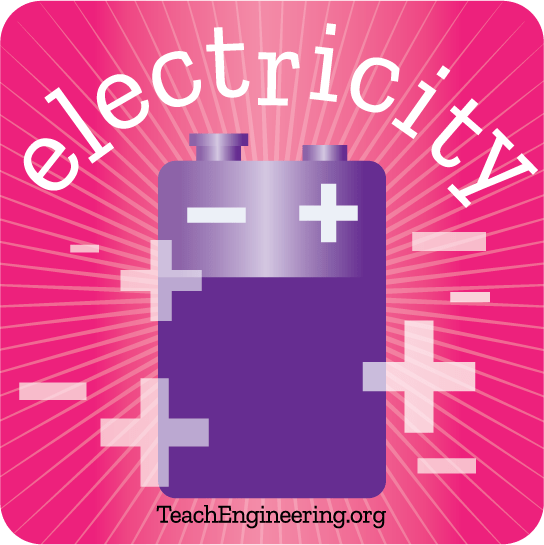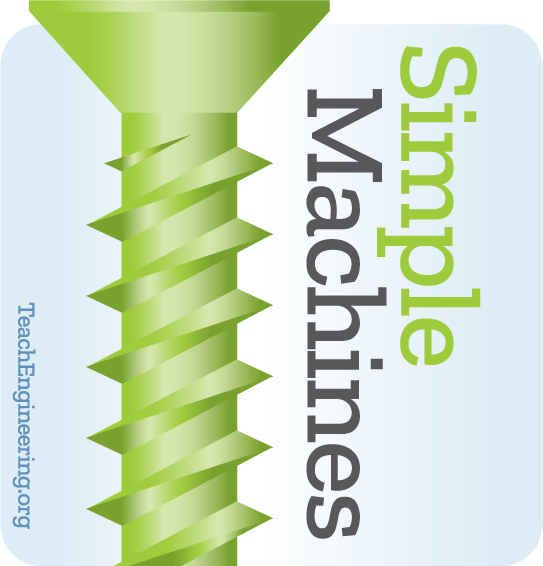Pulleys are the basis of the modern machines
we use every day.
Engineers harness the power of pulleys by
designing processes and mechanisms that
help us achieve difficult tasks.
Thousands of years ago, early engineers used pulleys to help with construction of structures of monumental proportions, such as aqueducts, monuments and even pyramids. Today, we use pulleys to perform a variety of useful everyday tasks like opening window blinds or operating a garage door.
Engineers combine multiple pulleys into a pulley system in order to either redirect the force or reduce the amount of force required to lift an object. A pulley is one of the six simple machines that help make difficult tasks possible by leveraging the engineering phenomenon of mechanical advantage of the design.
A pulley is a system of rope looped over one or more wheels to make it easier to lift heavy objects. Pulling the rope downward creates an upward force on the load.
There are three basic systems of pulleys: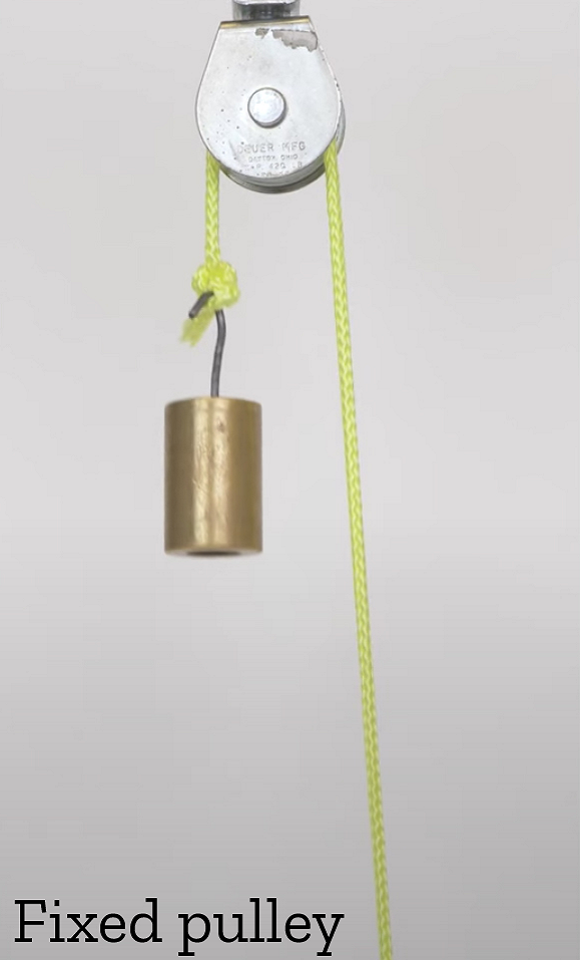 A fixed pulley has a
wheel that is secured in
a single spot and changes
the direction of the force
needed to lift an object.
The pulley itself stays in
place while the load
moves with the rope.
A fixed pulley has a
wheel that is secured in
a single spot and changes
the direction of the force
needed to lift an object.
The pulley itself stays in
place while the load
moves with the rope.
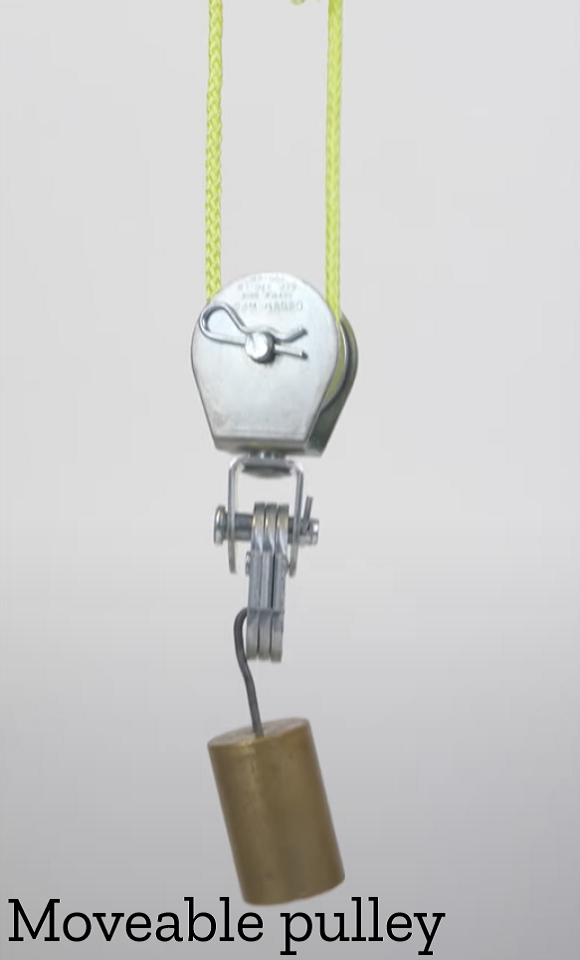 A movable pulley has a
pulley attached to the
object; one end of the
rope is attached to a
fixed point and the other
end of the rope is free.
A movable pulley has a
pulley attached to the
object; one end of the
rope is attached to a
fixed point and the other
end of the rope is free.
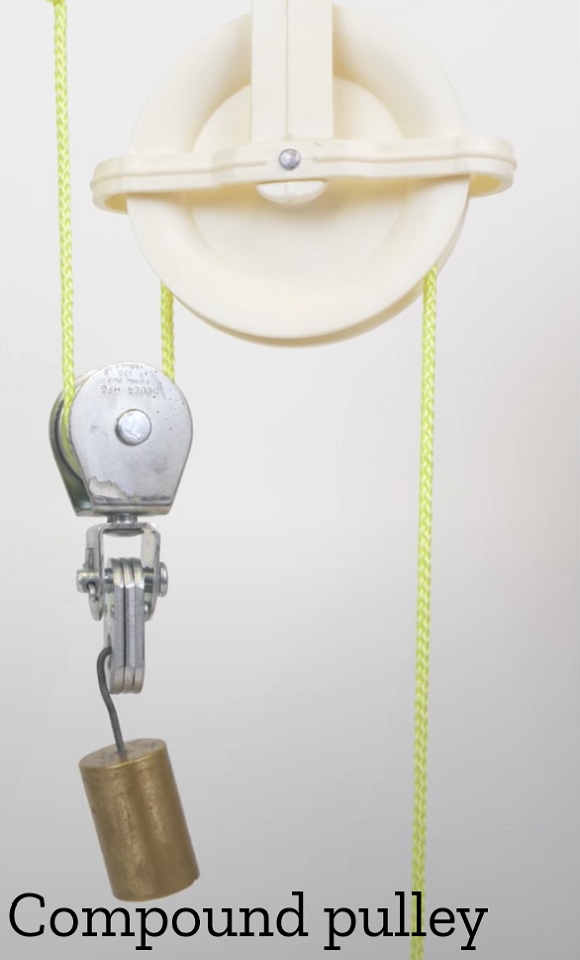 A compound pulley is a
combination of a fixed
and movable pulley to
maximize the mechanical
advantage of the system.
A compound pulley is a
combination of a fixed
and movable pulley to
maximize the mechanical
advantage of the system.
Understanding how pulleys work allows modern engineers to design machines like elevators, cranes, bulldozers and more!


Pulley Curricula

The engaging resources from TeachEngineering featured here, by grade band, exemplify pulley curricula.
Grades K-2
- Coming Soon!
Grades 3-5
- Pyramid Building: How to Use a Wedge Pyramid Building: How to Use a Wedge

Students learn how simple machines, including wedges, were used in building both ancient pyramids and present-day skyscrapers. In a hands-on activity, students test a variety of wedges on different materials (wax, soap, clay, foam).
- The Power of Mechanical Advantage The Power of Mechanical Advantage

Students learn about the mechanical advantage offered by pulleys in an interactive and game-like manner. Using a LEGO® MINDSTORMS® robotics platform and common hardware items, students build a mechanized elevator system.
- Solid Rock to Building Block Solid Rock to Building Block

Students continue their pyramid building journey, acting as engineers to determine the appropriate wedge tool to best extract rock from a quarry and cut into pyramid blocks. Using sample materials (wax, soap, clay, foam) representing rock types that might be found in a quarry, they test a variety of...
- Wheeling It In! Wheeling It In!

In this open-ended design activity, students use everyday materials—milk cartons, water bottles, pencils, straws, candy—to build small-scale transportation devices. They incorporate the use of two simple machines—a wheel and axle, and a lever—into their designs.
- Powerful Pulleys Powerful Pulleys

Students learn how a pulley can be used to change the direction of applied forces and move/lift extremely heavy objects, and the powerful mechanical advantages of using a multiple-pulley system. Students perform a simple demonstration to see the mechanical advantage of using a pulley, and they ident...
- See More
Grades 6-8
- A Simple Solution for the Circus A Simple Solution for the Circus

In this activity, students are challenged to design a contraption using simple machines to move a circus elephant into a rail car.
- The Magician's Catapult The Magician's Catapult

In this activity, students reinforce their understanding of compound machines by building a catapult. Given the building materials, students design and build their catapult to launch a grape a certain distance.
- Levers That Lift Levers That Lift

Students are introduced to three of the six simple machines used by many engineers: lever, pulley, and wheel-and-axle. In general, engineers use the lever to magnify the force applied to an object, the pulley to lift heavy loads over a vertical path, and the wheel-and-axle to magnify the torque appl...
- The Advantage of Machines The Advantage of Machines

In this lesson, students learn about work as defined by physical science and see that work is made easier through the use of simple machines. Already encountering simple machines everyday, students will learn about their widespread uses in improving everyday life.
- Not So Simple Not So Simple

Students expand upon their understanding of simple machines with an introduction to compound machines. This lesson encourages students to critically think about machine inventions and their role in our lives.
- See More
Grades 9-12
- Simple Machines and the Rube Goldberg Challenge Simple Machines and the Rube Goldberg Challenge
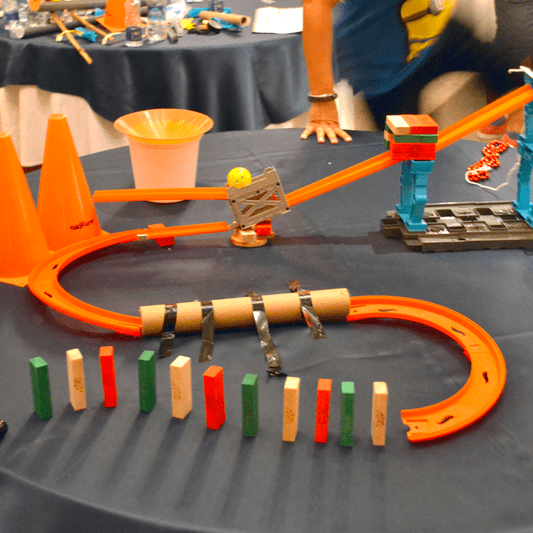
Students research and learn about simple machines and other mechanisms through learning about a Rube Goldberg machine. Student teams design and build their own Rube Goldberg devices that incorporate at least six simple machines. This project is open-ended with much potential for creativity and fun.
- Flying T-Shirts Flying T-Shirts

During this engineering design/build project, students investigate many different solutions to a problem. Their design challenge is to find a way to get school t-shirts up into the stands during home sporting events. They follow the steps of the engineering design process to design and build a usabl...
- Splash, Pop, Fizz: Rube Goldberg Machines Splash, Pop, Fizz: Rube Goldberg Machines

Refreshed with an understanding of the six simple machines; screw, wedge, pully, incline plane, wheel and axle, and lever, student groups receive materials and an allotted amount of time to act as mechanical engineers to design and create machines that can complete specified tasks.



